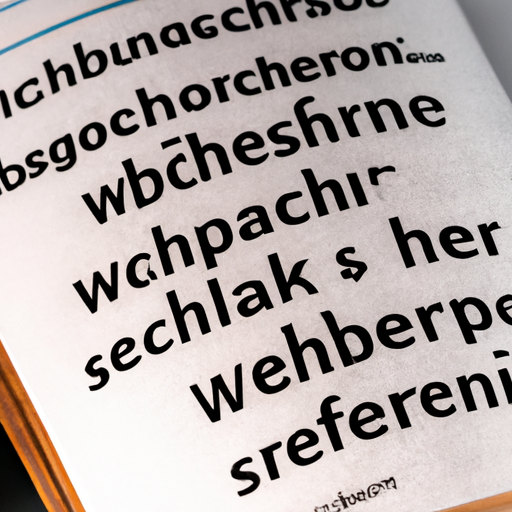When it comes to fingering, there are various techniques one can employ to make the experience pleasurable for both partners. However, what works for one person may not necessarily work for another. So, how do you finger someone in a way that ensures maximum satisfaction? Well, you’re about to find out. In this article, we’ll explore the best ways to finger someone and give you tips to ensure that your partner enjoys the experience. Whether you’re new to the art of fingering or a seasoned pro looking to up your game, we’ve got you covered. So, let’s get started.
1. Mastering the Art of Fingering: The Ultimate Guide
Fingering is an essential technique in playing any instrument, particularly in piano, guitar, and other stringed instruments. It involves utilizing your fingers to press on specific keys or strings to produce a note or chord. To become a skilled musician, mastering the art of fingering is crucial.
Firstly, position your hands correctly. Your hands should rest comfortably on the keys, fingers slightly curved, and the thumb resting on middle C. Proper hand placement and orientation can help you reach more keys at once and produce a better sound quality.
Another vital aspect to perfect fingering is practicing the correct finger placement on the keyboard or fretboard. Each finger corresponds to a specific note, and pressing the correct key or string with the right finger is critical to creating a smooth and accurate sound. The thumb is commonly used for bass notes, while the other fingers, starting with the index, are used for melody and harmony.
When learning new pieces, focus on the fingering notations on the sheet music. These markings give you an idea of which fingers to use when playing specific passages, helping you develop good fingering habits in terms of fluidity and accuracy. Remember to always use your fingertips, not your nails or the pads of your fingers, for a clear and clean touch.
Additionally, incorporating finger exercises into your daily practice can help enhance your dexterity, strength, and endurance. Scales, arpeggios, and chord progressions are excellent exercises to practice, enabling you to build muscle memory and speed gradually. Aim to start slow and gradually increase your speed while maintaining your accuracy.
Lastly, it is essential to relax your fingers while playing. Tension in the hand can cause strain, leading to mistakes and poor sound quality. Practicing deep breathing techniques and hand-stretching exercises can alleviate tension, keeping your fingers flexible and nimble.
In conclusion, mastering the art of fingering requires dedication, practice, and patience. Paying attention to hand positions, finger placement, fingering notations, finger exercises, and relaxation techniques is essential for a skilled pianist, guitarist, or any instrumentalist. Incorporating these tips into your practice routine can lead to better performance, a smoother playing experience, and ultimately, a more satisfying musical journey.
2. Unlocking Your Potential: Tips for Optimal Fingering Technique
Playing an instrument is more than just hitting the right notes. Proper fingering technique is crucial to unlocking your potential as a musician. Here are some tips to help you develop optimal fingering technique:
- Practice Scales: Scales are the foundation of music theory and practicing them is an excellent way to develop finger dexterity. Start slow and gradually increase your speed. Focus on accuracy and smoothly moving from one note to the next.
- Keep Your Fingers Close to the Fretboard: When playing, keep your fingers as close to the fretboard as possible. This will give you greater control and allow you to transition between notes more easily.
- Use Proper Hand and Finger Placement: Position your hand and fingers in a way that allows you to easily reach all of the notes you need to play. Proper placement will also prevent strain or injury.
- Avoid Excessive Tension: Tension in your fingers and hands will make it difficult to play smoothly and can lead to injury. Ensure that your hands, fingers, and wrists remain relaxed while playing.
- Watch Your Angles: Pay attention to the angle of your hand and fingers when playing. Changing the angle slightly can make a big difference in the ease and accuracy with which you play.
- Experiment with Different Fingerings: Don’t be afraid to try different fingerings to find what works best for you. Your fingers are unique and what works for one person may not work for another. Experimenting can help you find your optimal fingering technique.
- Don’t Neglect Your Pinky Finger: The pinky finger is often the weakest and most underutilized finger. Work on strengthening it and using it to its fullest potential.
In summary, optimal fingering technique is essential to unlocking your potential as a musician. Practice scales, keep your fingers close to the fretboard, use proper hand and finger placement, avoid excessive tension, watch your angles, experiment with different fingerings, and don’t neglect your pinky finger. By following these tips and regularly practicing, you’ll soon see improvement in your playing and be on your way to becoming a master musician.
3. From Beginner to Pro: Steps to Improve Your Fingering
As a beginner, mastering finger placement and dexterity can be a challenging part of playing an instrument. Whether you are learning the guitar, piano or any other instrument, improving your fingering technique is crucial in order to progress to a more advanced stage. Here are some practical steps that you can take to improve your fingering skills and become a pro:
1. Practice, Practice, Practice: One of the most obvious steps to improve your fingering technique is to practice regularly. Set aside a specific time each day to practice and focus on developing your finger strength and agility. The more you practice, the easier it will become to play more complex pieces.
2. Start With Basic Exercises: Before you tackle more advanced pieces, start with simple exercises to strengthen your fingers. Practice moving your fingers in a variety of ways, using simple scales and chord progressions to build up your finger memory and accuracy.
3. Use Proper Hand Position: Ensure that your hand position is correct, with your wrist and fingers in a relaxed and natural position. This will help to prevent cramping and unnecessary tension in your hands, allowing you to play for longer periods of time without experiencing fatigue.
4. Slow Down: If you find yourself making mistakes when playing, slow down your tempo to focus on accuracy and technique. Playing too fast can actually hinder your progress, as it can lead to sloppy finger movements and mistakes.
5. Learn from Others: Watching and learning from other musicians is a great way to improve your finger placement and technique. Attend concerts and watch videos of performances by experienced musicians to observe their technique and learn from their playing.
6. Use Correct Finger Placement: To play proficiently, it is important to use the correct finger placement for each note. Take the time to memorize the correct fingering for scales, chords and songs, and use this knowledge to improve your overall finger placement.
7. Practice with a Metronome: A metronome can help you to improve your timing and develop a better sense of rhythm when playing. Use it to keep yourself on tempo while practicing, gradually increasing the speed as you become more comfortable with the piece.
Improving your finger placement is a key part of developing your playing skills, whether you are a beginner or an experienced musician. By following these simple steps and practicing regularly, you can become a pro in no time.
4. The Importance of Ergonomics in Fingering for Musicians
When it comes to playing musical instruments, one of the most important factors to consider is ergonomics in fingering. Ergonomics refers to the study of designing equipment and devices that fit the human body’s capabilities and limitations. In the context of playing an instrument, ergonomics focuses on designing the playing posture, hand position, and fingering technique to minimize the risk of injury and enhance the musician’s performance.
Why is ergonomics crucial in fingering for musicians? First, playing an instrument that requires repetitive finger movements can put a strain on the muscles and tendons in the hands and wrists. Over time, this strain can lead to injuries such as tendinitis, carpal tunnel syndrome, and trigger finger. Proper ergonomics can reduce the likelihood of these conditions by distributing the workload evenly across different muscle groups and minimizing the stress on any one area.
Second, ergonomics can improve the accuracy and speed of fingering, leading to better performances. When the musician’s hand and fingers are positioned optimally, they can move more fluidly and efficiently, making it easier to play complex passages and express nuanced musical ideas. By contrast, poor ergonomics can lead to tension, fatigue, and mistakes that detract from the music’s quality and impact.
To promote good ergonomics in fingering, musicians should pay attention to several key factors. First, they should choose an instrument that fits their physical abilities and preferences. For example, a guitarist should select a guitar with a neck and fretboard that are comfortable to play, while a pianist should adjust the bench height and distance from the keyboard to suit their posture and reach.
Second, musicians should practice proper hand and finger positioning. This may involve aligning the wrist, fingers, and forearm in a straight line or at a slight angle, depending on the instrument and playing technique. Musicians should also avoid unnecessary tension or gripping with their hands and fingers, which can limit mobility and cause strain.
Finally, musicians should incorporate stretching and warm-up exercises into their practice routine to prepare their hands and fingers for playing. This may include stretching the fingers, wrists, and forearms, as well as performing finger isolation exercises (such as pressing one finger at a time against a surface) to increase dexterity and control.
In conclusion, ergonomics is a critical consideration for musicians who want to play their instruments safely and effectively. By understanding and applying good ergonomics principles, musicians can reduce the risk of injury, improve their playing technique, and maximize their musical potential. Whether you’re a beginner or an experienced professional, taking care of your body and optimizing your playing posture and technique can help you achieve your musical goals and enjoy the process of making music.
5. Exploring Finger Placement: Techniques for Precision and Control
Precision and control are fundamental aspects of musicianship, and finger placement is an essential technique that can significantly impact these elements. As a musician, developing finger placement techniques can help you achieve success in your musical pursuits, from accurate note production to smooth transitions and effortless playing.
One technique for finger placement is the use of finger patterns, which involves identifying and memorizing standard finger positions for specific patterns and scales. This technique is particularly helpful for beginners who are still developing muscle memory and hand coordination. With consistent practice, the fingers will begin to move instinctively, leading to faster and more precise playing.
Another technique for finger placement is the use of finger substitutions. This technique involves replacing one finger with another to reach a note or chord more comfortably. For example, if a chord requires a fifth finger stretch, you can substitute the fifth finger with the fourth finger on a nearby fret to achieve a more comfortable hand position.
Finger rolling is another technique for precision and control. This technique involves rolling your fingers up and down the fretboard to create smooth transitions and minimize string noise. Proper finger rolling can also help you produce clear notes and chords, making your playing sound more polished and professional.
Using the fingertips for finger placement is also crucial for proper technique. The fingertips are more accurate than the flat parts of your fingers, allowing for more precise note production. Be sure to place your fingertips right behind the frets for the best tone and control.
Finally, finger placement techniques can also improve speed and dexterity. Moving your fingers quickly and precisely is essential for playing fast patterns and complex pieces. Practicing finger placement regularly can increase finger strength and speed, allowing you to play more challenging music with ease.
In conclusion, exploring finger placement techniques can help you achieve precision and control in your playing, leading to better musical outcomes. Whether you are a beginner or an experienced musician, incorporating these techniques into your practice routine can take your playing to the next level.
6. Musicality and Fingering: Enhancing Your Sound with Proper Technique
In order to truly enhance the sound of your playing, it is important to pay attention to both your musicality and fingering techniques. These two components work together to create a seamless and beautiful sound. Here are some tips to help you improve both of these aspects:
Musicality:
– Start by listening to recordings of pieces you are working on. Pay attention to how the musicians interpret the music and try to replicate their phrasing and dynamics.
– Practice with a metronome to ensure that you are playing at a consistent tempo, but also experiment with slight variations in tempo to create a more expressive sound.
– Connect each note to the next by using legato technique. This means smoothly transitioning from one note to the next without any gaps or pauses.
– Don’t be afraid to play with emotion and passion. Allow yourself to feel the music and let that come through in your playing.
Fingering:
– Make sure that your fingers are properly positioned on the keys or strings. This means using the tips of your fingers and keeping them perpendicular to the keys.
– Use fingerings that feel the most natural and comfortable to you. Everyone’s hands are different, so experimenting with different fingerings may be necessary to find what works best for you.
– Practice scales and arpeggios regularly to improve your finger dexterity and speed. These exercises will help you develop fluid and efficient finger movements.
– Don’t forget about the role of your non-playing fingers. Make sure they are in the right position on the keys or strings to prepare for the next note or chord.
– Remember to breathe and stay relaxed. Tension in your hands or body can lead to poor fingering technique and a less enjoyable experience for both you and your audience.
By focusing on both your musicality and fingering techniques, you can take your playing to the next level and create a more beautiful and expressive sound. Incorporate these tips into your practice routine and you’ll be amazed at how much progress you can make.
7. Troubleshooting Common Fingering Problems: Solutions and Strategies
Playing a musical instrument can be a challenging task, especially when you’re learning to play it for the first time. One of the most common problems that beginners face is executing correct finger placement on their instrument. Fortunately, there are several solutions and strategies that you can implement to overcome these obstacles.
The first common fingering issue is when the player is having difficulty with the finger stretch. It’s essential to have good finger flexibility when playing an instrument. A quick solution to this problem is to practice finger warm-up exercises before playing your instrument. Also, playing scales and arpeggios regularly can help to stretch your fingers and improve their dexterity.
Another common fingering issue is when players have difficulty picking up speed when executing fast passages. This issue can be overcome by using the “slow practice” technique. Practice the passage slowly and gradually speed up as you become more comfortable with the fingering.
Sometimes players may struggle with playing complex chord passages, especially when playing guitar. A solution to this problem is to break the chord into its individual notes, then practice playing them slowly, and gradually increasing the speed. This technique is much more manageable and effective than trying to play the entire chord all at once.
Fingers sometimes slip off frets or keys while playing, which can be frustrating for musicians. One solution to this problem is to build up calluses on your fingertips. It helps to practice regularly to toughen up your fingertips. You can also use friction grip pads or gloves to get a better grip on your instrument.
Lastly, if you’re experiencing any discomfort while playing your instrument, it’s important to take a break and stretch your hands and fingers. You can also massage your hands to release any tension. Playing an instrument should be a pleasurable experience, and it’s essential to take care of yourself as you learn to play.
In conclusion, finger placement and execution is an important aspect of playing a musical instrument. Following the above solutions and strategies can help you overcome common fingering issues and improve your skills as a musician. Keep practicing and stay patient, and you’ll be a pro in no time! In conclusion, mastering the art of finger technique may take time and practice, but with these helpful tips and techniques, you’ll be well on your way to becoming a pro. Whether you’re a beginner, intermediate or advanced player, just remember to stay patient and consistent with your training. With dedication and perseverance, you’re sure to achieve your goals and reach new heights in your musical journey. So go ahead, grab your instrument and start experimenting – the possibilities are endless!


